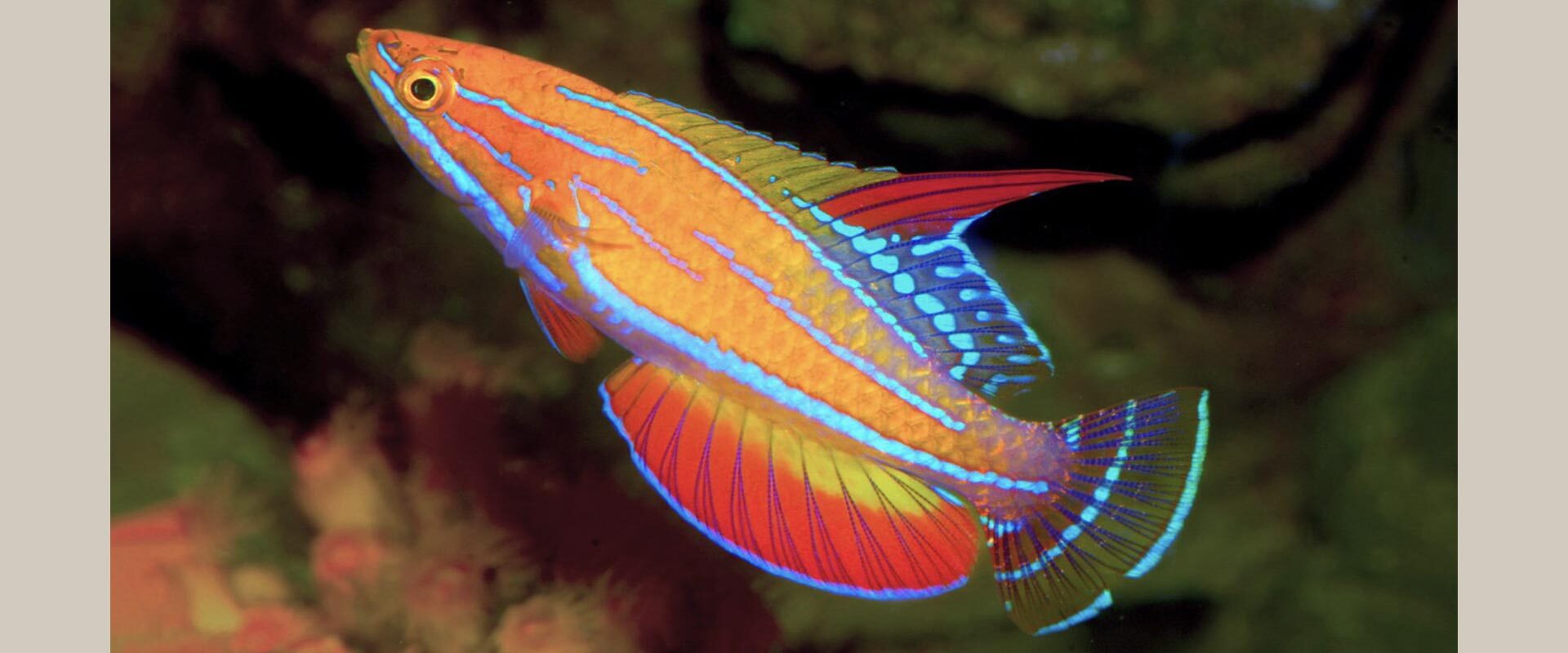New “Flasher” Wrasse described in a recent study by Yi-Kai Tea and Fenton Walsh
Wrasses (the family Labridae), are the most abundant and conspicuous fishes on tropical reefs around the world. They are second largest family of marine fishes. Parrotfish are likely the best known of the family but the much less common “flasher” wrasse are a diver favorite and one of a marine life photographer’s greatest challenges! Not only are they habitat specific and therefore infrequently encountered, most of the time they aren’t “flashing” at all! Only the males of the genus Paracheilinus flash (or more accurately said, “display”). They basically only do it at dawn and dusk and when they do display; it seems like for only a nano-second. The rest of the time they aren’t that notable, drab and small.
Male flashers maintain a harem, which they mate with daily (at dawn and dusk). During the twilight hours if they aren’t displaying for a female’s attention, they swim around frantically flashing vying to fend off rival males. When the action is “hot” it’s mind-blowing as the male transforms itself from a drab nondescript and mostly un-noticed species into a rainbow of colors.
We are blessed to have five species in the BHS; P. cyaneus, P. filamentosus, P. flavianalis, P. walton (endemic to Cenderawasih Bay), and P. nursalim (previously thought to be endemic to Misool and the Bomberai Peninsula to Triton Bay).
A new flasher, P. Amanda, and it’s a beauty, has just been described from eastern Australian waters, the Great Barrier Reef and the Coral Sea. It was named in honor of Amanda Hay, Collection Manager of the Ichthyology collection at the Australian Museum.
On the homefront, the paper also extends the range of the Bird’s Head’s P. nursalim. “examination of labrid specimens collected from Flinders Shoal, Timor Sea, approximately 300 kilometers north of Darwin in the Northern Territory yielded a specimen of Paracheilinus unassignable to any of the aforementioned species. Closer examination of color photographs and preserved material agrees well with P. nursalim, a species previously known only from the Bird’s Head Peninsula in West Papua.” (This is 1200 km away from the Bird’s Head!)
To read the entire study, the purpose of which is to provide a review of the genus Paracheilinus occurring in Australia, click HERE.





































